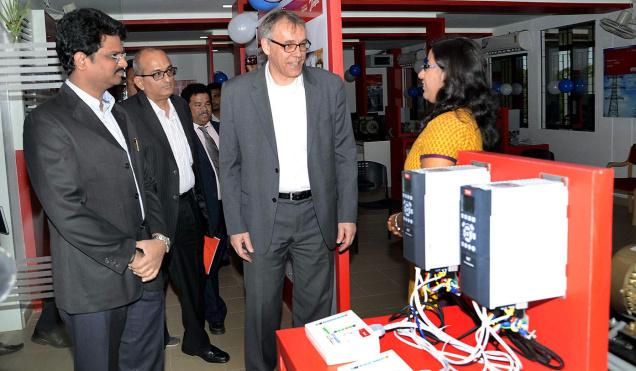The Danfoss Advanced Drives Laboratory was inaugurated ont the VIT University campus here on Wednesday.
The lab has been set up to help solve India’s energy problems through a collaborative research between the industry and the research scholars of VIT on energy efficiency using the drive technology, according to Ravichandran Purushothaman, president, Danfoss India, Chennai. The laboratory was established at a cost of Rs.50 lakh.
Mr. Ravichandran told reporters that huge energy deficit was a major challenge faced by the country. “Our country needs to add 500 MW of additional capacity every week to achieve a growth rate of 7-8 per cent. But we do not have a strong university-industry initiative in energy efficiency. We want to build a complete eco system for an India-centric energy lab, and bring faculty and industry together to solve the problem using the drive technology,” he said.
Pointing out that commercial air-conditioning of buildings consume more than 30 per cent of the available energy, Mr. Ravichandran said that this consumption could be reduced to 20 per cent through energy-savings using the drive technology. Ole Moller Jensen, president, Danfoss Power Electronics, Denmark, who inaugurated the Advanced Drives Laboratory said that motors are the largest consumers of electricity in terms of commercial applications.

Sixty percent of the electricity that is used for air-conditioning is consumed by the motors. “If you use motors without drives, you are using more electricity. You can save 30 to 40 per cent power by using the drive technology”, he said.
Mr. Ravichandran said that the drive technology can be used efficiently for saving energy in air-conditioning, cold storage, food processing, airports and hospitals. But the penetration of drives into motors in India is less than 10 per cent compared to 30-40 per cent in China and 50-60 per cent in Europe. Mr. Jensen wanted the students to think and strive for energy efficiency. “Not only manufacturers of machinery but builders too should try to implement energy efficiency in all their undertakings. We have to think of how to use the existing available energy in a better way”, he added.
G.V. Selvam, vice-president of VIT, and Parthasharathi Mallick, senior professor and Dean, School of Electrical Engineering, VIT, said that the establishment of the lab has been made possible through a MoU signed between Danfoss and VIT for the establishment of a Centre of Excellence for doing innovative research in the areas of climate and energy, using advanced electrical drives.
By Anh Tuan
